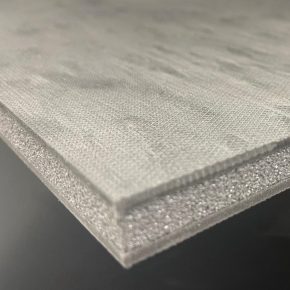
Who fits LST radiators?
Because of the nature of low surface temperature heating solutions, it’s vital that they are properly installed by the right team. Contour discusses who should fit your LST radiators and why proper installation is key.
LST Radiators can be an invaluable safety asset to a school, hospital or care home because they reduce the risk of scolds and burns, making environments safer for staff and service users.
However, LST radiators should only be installed by plumbing and heating engineers. On a traditional build project, M&E consultant engineers will have already specified what the design and size of the LST radiator will be to be when it’s installed. This ensure that you always get the best heat output for the space.
This differs from design and build projects. In these projects, it’s up to the contractor to design the system and they choose the size of the LST Radiator.
When installing an LST radiation, the first thing that needs to be considered is the final position it will have on the walls. In areas with limited spaces, it’s important to know where the LST will be to help decide furnisher placement which could otherwise clash with the casing once it’s been installed.
Once the LST radiator has been hung on the wall, the flow and return water feeds can be connected. The entry pipes to the LST radiator can depend on each location. However, the neatest solution is to have the pipes entering from behind it. This means you don’t have surface mounted pipework taking up valuable space in the room.
Once the heating system has been piped up, it can be filled with water and tested for leaks. Once this process is complete, the casing can be installed over the top. Depending on the entry of the pipes and the flooring design, the casing may need to have cut outs in it to allow it to fit neatly over the top. Once the radiator guard is installed to the manufacturer’s guidelines, it can be sealed up with a suitable mastic.
Depending on the environment and the client’s needs, the heating engineer can also install a range of thermostatic radiator valves (TRVs), these can include:
– Internal- inside the radiator cover. This is only recommended when the LST radiator is connected bottom opposite end (BBOE).
– Remote sensing- inside the LST radiator cover. This is used when the radiator has been connected up top bottom opposite end and the remote sensor can be installed at the bottom of the cover.
– External- outside of the radiator cover which enables the client to turn the radiator temperature up and down without needing to gain access to the radiator cover.
Some manufacturers include a survey service which means that any cut-outs for surface mounted pipework, skirting and other furniture can be cut around in the manufacturing process.
This means the radiator guards can be installed at a later date when all of the first fix items of the project have been installed. This will minimise damage as the radiator guards won’t be installed too early or in storage for a number of months on site.
Contour can be contacted at;
The Mansions
43 Broadway
Shifnal
TF11 8BB
Tel: 01952 290 498
Email: [email protected]
Visit Supplier's page
Latest news

30th April 2024
ASSA ABLOY Door Group strengthens offering with partnership
ASSA ABLOY Door Group is proud to announce a new internal restructure that sees the company joining forces with all comparable business units across Europe, the Middle East, India and Africa, to form a new global division – the ASSA ABLOY EMEIA Door Business Segment.
Posted in Access Control & Door Entry Systems, Architectural Ironmongery, Articles, Building Associations & Institutes, Building Industry News, Building Products & Structures, Building Services, Doors, Facility Management & Building Services, Restoration & Refurbishment, Retrofit & Renovation, Security and Fire Protection
30th April 2024
Geberit exhibiting at British Pig & Poultry Fair 2024
Bathroom and piping manufacturer Geberit will be exhibiting at the British Pig & Poultry Fair at NEC Birmingham (15 – 16 May 2024).
Posted in Articles, Building Industry Events, Building Industry News, Building Products & Structures, Building Services, Exhibitions and Conferences, Facility Management & Building Services, Innovations & New Products, Pipes, Pipes & Fittings, Plumbing, Retrofit & Renovation
29th April 2024
Hush: New Hushlay options offer acoustic upgrade potential
Leading UK acoustic systems manufacturer Hush Acoustics has introduced two additional variants of its Hushlay Soundmatting product.
Posted in Acoustics, Noise & Vibration Control, Articles, Building Industry News, Building Products & Structures, Building Services, Facility Management & Building Services, Floors, Innovations & New Products, Insulation, Restoration & Refurbishment, Retrofit & Renovation
29th April 2024
Digital Construction Week 2024 speaker programme announced
The programme at Digital Construction Week is carefully designed to help you keep up with the fast pace of innovation in the built environment.
Posted in Articles, Building Industry Events, Building Industry News, Building Products & Structures, Building Services, Exhibitions and Conferences, Innovations & New Products, news, Posts, Restoration & Refurbishment, Retrofit & Renovation, Seminars, Sustainability & Energy Efficiency
 Sign up:
Sign up: